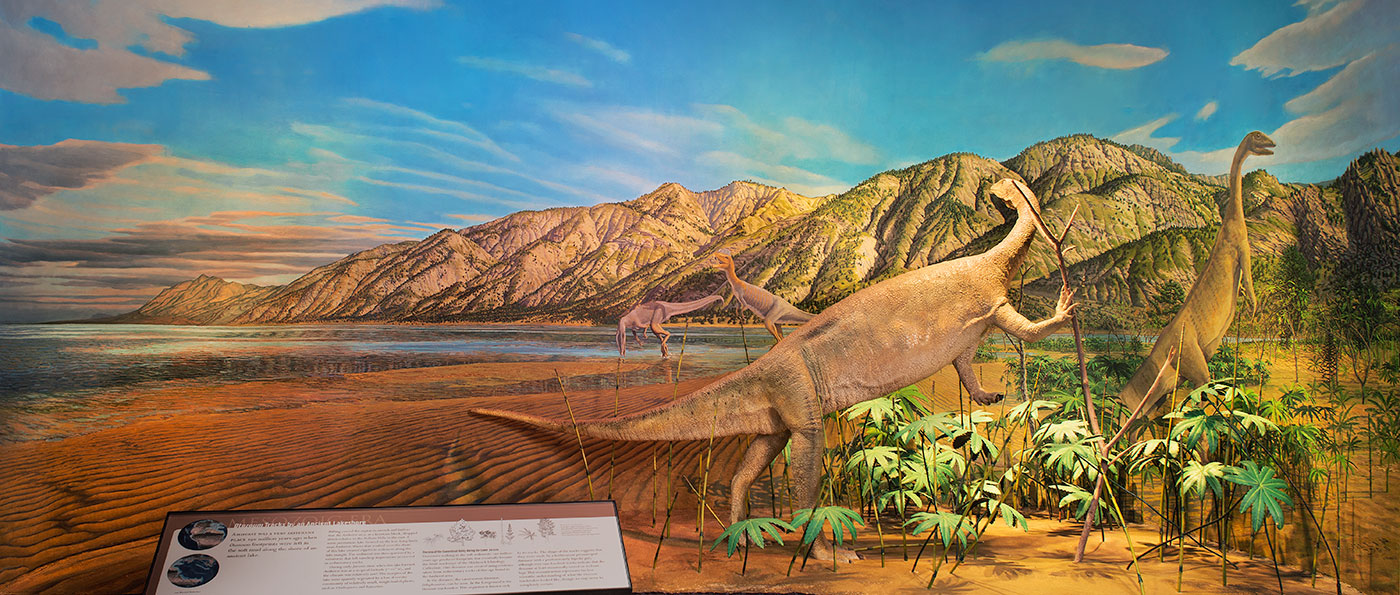
"Beneski Diorama", 2006, 9' x 19', oil on wall-mounted canvas; Image courtesy of Beneski Museum of Natural History at Amherst College.

"Beneski Diorama", 2006, 9' x 19', oil on wall-mounted canvas; Image courtesy of Beneski Museum of Natural History at Amherst College.
In this mural, also at the Beneski Museum of Natural History, we look north and west along the Eastern Border Fault during the Early Jurassic. The high lake level indicates that we are in a climatic cool and wet cycle.
A pair of Dilophosaurs gambol along the lake edge looking for a meal of fish. One has noted the mother / child pair of Anchisaurs. Both Anchisaurus and Dilophosaurus would have nearly 360 degree vision. The young Anchisaur is looking out its right eye to its mother to receive behavioral cues in this dangerous moment. Under the direction of Emma Rainforth, a paleontologist at Ramapo College who has studied Otozoum tracks, Anchisaurus is shown as two legged.
Under the direction of Kirk Johnson, an Amherst College graduate who is now Sant Director of the Smithsonian National Museum of Natural History, three vegetation zones are shown. Closest to the lake margin are the Equisetites (horsetails) and Clathropteris (large, broad-leafed fern) flora. Moving to slightly higher ground are Otozamites (sumac-like shrub) and Phlebopteris (smaller, fan-shaped fern). Ascending the slopes of the escarpment are the Cheirolepidiaceae flora of the conifers (evergreens) Pagiophyllum and Brachiophyllum. These conifers produced pollen that accumulated in the lakes. Palynologists, by studying fossilized pollens, were able to detect variations in the Mesozoic climate and correlate the strata in the eastern Mesozoic basins.